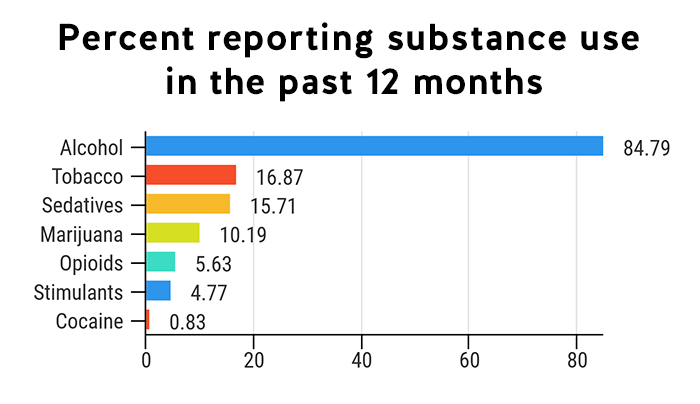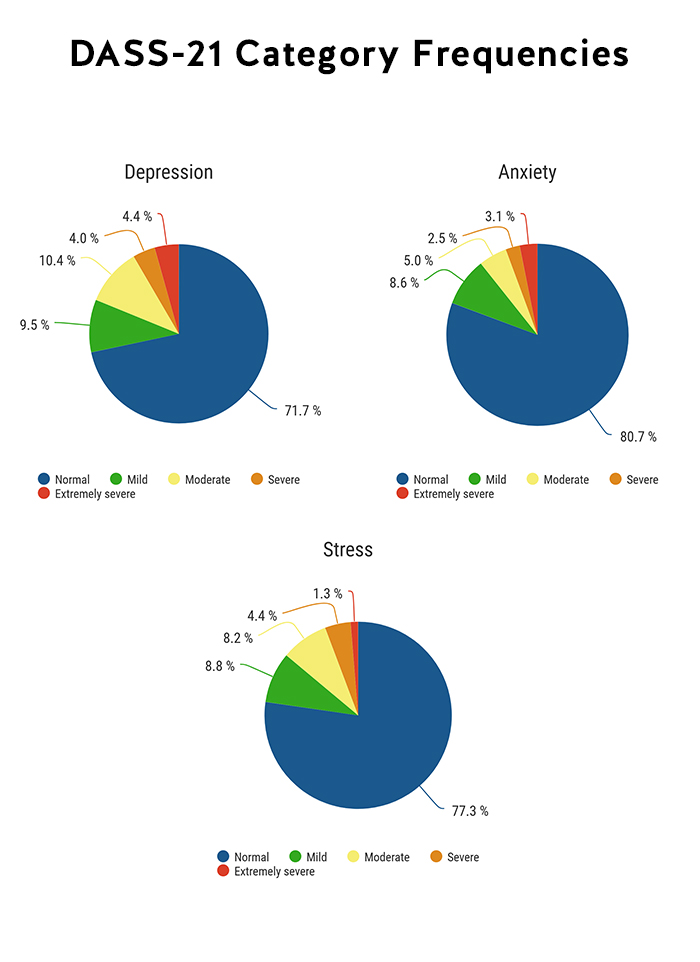As Jarrod Reich demonstrates in this issue’s lead article, extensive research exists at the intersection of the legal profession and mental health. Perhaps no research has helped frame the current discussion of mental health in the legal profession more than a 2016 study conducted by Patrick Krill, Ryan Johnson, and Linda Albert and funded by the American Bar Association (ABA) and the Hazelden Betty Ford Foundation. The ABA–Hazelden Betty Ford Foundation study, published in the Journal of Addiction Medicine as “The Prevalence of Substance Use and Other Mental Health Concerns Among American Attorneys,” surveyed more than 12,000 lawyers and yielded eye-opening figures on lawyers suffering from mental health afflictions. In addition to the 2016 ABA–Hazelden Betty Ford Foundation study, more granular work is also being done to investigate specific angles of mental health and well-being across the profession. In a 2018 article published in the Journal of Health and Social Behavior titled “The Status–Health Paradox: Organizational Context, Stress Exposure, and Well-Being in the Legal Profession, Jonathan Koltai, Scott Schieman, and Ronit Dinovitzer drill down on one aspect of this ostensible advantage by examining the question, “Does higher status attainment always benefit health?” In this installment of From the Journals, we aim to shine a light on both the common reference points and the deeper, nuanced analysis.
The 2016 ABA–Hazelden Betty Ford Foundation study
The 2016 ABA–Hazelden Betty Ford Foundation study examined alcohol and drug use as well as depression, anxiety, and stress in the legal profession on the basis of a representative sample of 12,825 practicing lawyers. Noting the profession’s reputation for higher-than-average substance use and mental health issues, the authors note that “few studies have been undertaken to validate these beliefs empirically or statistically.” The 2016 study sought to address that discrepancy.
Perhaps no research has helped frame the current discussion of mental health in the legal profession more than the 2016 study conducted by Patrick Krill, Ryan Johnson, and Linda Albert.
The sample used for the study featured only lawyers who were actively employed in the legal profession. Recruited from across 19 states, the sample included 53.4 percent men and 46.5 percent women. A majority of the sample were married (70.2 percent), had children (65.8 percent), and/or were between ages 30 and 60 (69.4 percent). A vast majority reported their race as Caucasian/white (91.3 percent). A slight majority had 20 or fewer years of practice experience (57.5 percent) with 40.9 percent working at a private firm, 21 percent in solo practice, and 19.6 percent in-house in a government or nonprofit setting. Within law firms, positions were fairly split between partners and associates (50.9 percent to 40.8 percent), with the majority of the sample reportedly working 41 hours or more per week (67.2 percent).
The study employed three existing self-reporting instruments to gather data from the sample of lawyers in each respective area: the Alcohol Use Disorders Identification Test (AUDIT); the Depression Anxiety Stress Scales (DASS); and the Drug Abuse Screening Test (DAST). The following charts capture just some of the critical data Krill, Johnson, and Albert develop.



Krill, Johnson, and Albert note that just 6.8 percent of respondents report having sought treatment for drug or alcohol problems. Of that group, 21.8 percent report having used legal-profession-specific programming. In conclusion, the authors write:
Attorneys experience problematic drinking that is hazardous, harmful, or otherwise generally consistent with alcohol use disorders at a rate much higher than other populations. These levels of problematic drinking have a strong association with both personal and professional characteristics, most notably sex, age, years in practice, position within firm, and work environment. Depression, anxiety, and stress are also significant problems for this population and most notably associated with the same personal and professional characteristics. The data reported here contribute to the fund of knowledge related to behavioral health concerns among practicing attorneys and serve to inform investments in lawyer assistance programs and an increase in the availability of attorney-specific treatment. Greater education aimed at prevention is also indicated, along with public awareness campaigns within the profession designed to overcome the pervasive stigma surrounding substance use disorders and mental health concerns. The confidential nature of lawyer-assistance programs should be more widely publicized in an effort to overcome the privacy concerns that may create barriers between struggling attorneys and the help they need.
The Status–Health Paradox
In their groundbreaking report, the authors of the 2016 ABA–Hazelden Betty Ford Foundation study note that “[e]ncouragingly, many of the same attorneys who seem to be at risk for alcohol use disorders are also those who should theoretically have the greatest access to, and resources for, therapy, treatment, and other support.” In their article, “The Status–Health Paradox: Organizational Context, Stress Exposure, and Well-Being in the Legal Profession,” published in the Journal of Health and Social Behavior, Jonathan Koltai, Scott Schieman, and Ronit Dinovitzer drill down on one aspect of this ostensible advantage by examining the question, “Does higher status attainment always benefit health?”
Large law firm lawyers were consistently least likely to report good health and most likely to report poor health.
Noting that the legal profession presents an unequal distribution of earnings and prestige, with large law firms “sitting at the pinnacle of the prestige ladder,” the authors set out to understand how this picture relates to the apparent distribution of well-being. “Given that lawyers working in large private firms experience the highest prestige and financial remuneration in the profession,” write Koltai, Schieman, and Dinovitzer, “it seems reasonable to expect more favorable health returns within this context.” What they found, however, is that the reality of well-being and status in the legal profession presents a more complicated story.
The authors drew their sample from two major studies of the legal profession—the second wave of the After the JD study (AJD2) and the 2010 Law and Beyond study (LAB), providing a comparison of the U.S. and Canadian contexts, respectively—and measured average income, proportion of overworked lawyers, and average work-life conflict across practice settings and income quintiles.

The authors found that lawyers in nearly all private-sector settings reported significantly higher instances of depressive symptoms than those in the public sector. Furthermore, they note that adding income into the equation reveals a “suppression effect,” whereby “were it not for the higher incomes in larger firms, the difference in depression between lawyers in large firms and those in the public sector would be even greater.” The authors found relatively similar results in the category of self-rated health. Perhaps most notably, large law firm lawyers were consistently least likely to report good health and most likely to report poor health. The authors offered two broad observations from their findings:
- They observe a status–health paradox, writing that “higher-status lawyers have a mental health disadvantage relative to their peers in the public sector and are no better off in terms of health.”
- They find that practice setting and income add complexity, writing that “adjusting for income, health disparities across practice settings become even greater—were it not for higher incomes in larger firms, the health gap between the public sector and larger firms would be even larger.”
Conclusion
The findings presented here represent just a selection from these two nuanced and highly detailed studies. Indeed, both the 2016 ABA–Hazelden Betty Ford Foundation study by Krill, Johnson, and Albert and the 2018 Status–Health Paradox study by Koltai, Schieman, and Donivitzer engage deeply with their respective data than we have relayed here. Moreover, these studies themselves are only two examples from a growing body of research around lawyer mental health well-being. Some focus specifically on law schools (see here and here). Others have widened their focus to the entire legal profession, such as Judge Cheryl Krause and Jane Chong’s recent journal article, “Lawyer Wellbeing as a Crisis of the Profession.” In cautious optimism, we hope the future of mental health in the profession benefits from this expansion of knowledge and self-reflection.



